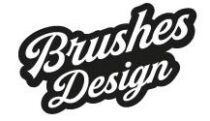This post is also available in: Español (Spanish) Português (Portuguese (Brazil))
Imagine this: you have an impressive design portfolio, creative projects that make anyone say “wow,” but when it comes to applying for jobs, you feel stuck. Why? Because even though your work speaks for itself, your CV is your first handshake with a potential employer. In this article, I’ll show you exactly how to create a Graphic Designer CV to work for a company, so you can open doors to new opportunities and finally get the recognition you deserve.
Why a Well-Crafted CV Matters for Graphic Designers
Your CV is more than just a list of jobs and skills. It’s a reflection of your creativity and professionalism. Unlike other professions, as a designer, your CV can (and should) showcase your visual identity and attention to detail.
Start with a Clear and Engaging Layout
First impressions matter. Keep your layout clean and organized, but don’t be afraid to let your creativity shine through. Use a grid system to align text, choose readable fonts, and add small design elements that represent your style.
Use the Right Format
Reverse-chronological: Start with your most recent experience.
Functional: Focus on skills if you have less experience.
Combination: A mix of both, perfect if you want to highlight projects and experience equally.
Essential Sections to Include in Your CV
Contact Information
Place this at the top of your CV. Make it easy for employers to reach you.
Full name
Phone number
Professional email
LinkedIn profile
Portfolio URL
Professional Summary
Write 3-4 lines that summarize who you are, what you specialize in, and what value you bring to the company.
Example: “Creative Graphic Designer with 5+ years of experience in branding and digital design. Passionate about crafting visual identities that resonate and inspire.”
Skills Section
Highlight both technical and soft skills.
Adobe Creative Suite (Photoshop, Illustrator, InDesign)
Typography
Layout and composition
Communication
Time management
Work Experience
Use action verbs and focus on achievements rather than just responsibilities.
Example: “Redesigned the company’s visual identity, increasing brand recognition by 40%.”
Education
List your degrees or certifications, most recent first.
Awards and Recognitions (Optional)
If you’ve won any design competitions or received notable recognition, include it!
Include Your Portfolio Strategically
Your portfolio is your greatest asset. Integrate links directly into your CV and mention specific projects where relevant. Ensure your online portfolio is up-to-date and showcases a variety of your best work.
Tailor Your CV to Each Application
Avoid sending the same CV to every job. Research the company, understand their style, and adjust your CV accordingly. Use keywords from the job description to increase your chances of passing ATS (Applicant Tracking Systems).
Common Mistakes to Avoid
Using too many fonts or colors
Forgetting to proofread (typos can ruin first impressions!)
Not updating your contact information
Final Touches for a Perfect CV
Export your CV as a PDF to preserve formatting.
Name the file professionally (e.g., John-Doe-Graphic-Designer-CV.pdf).
Test your links to ensure they work.
Useful Resources
Conclusion
Creating a Graphic Designer CV to work for a company is about balancing creativity with professionalism. Remember, your CV should tell your story in a way that’s both visually appealing and easy to read. Take the time to craft it carefully, and you’ll increase your chances of landing that dream job.
